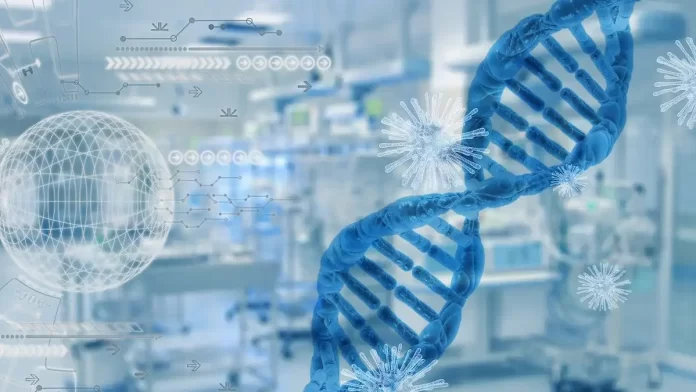Somatic Cell Nuclear Transfer (SCNT) is a groundbreaking biotechnological technique that has revolutionized the fields of reproductive biology, regenerative medicine, and cloning.
Developed in the late 20th century, SCNT allows scientists to reprogram somatic cells into pluripotent cells, creating genetically identical organisms or generating patient-specific stem cells for therapeutic purposes.
This article delves into the intricacies of Somatic Cell Nuclear Transfer, its history, applications, controversies, and its potential to shape the future of medicine and research.
Understanding Somatic Cell Nuclear Transfer
Somatic Cell Nuclear Transfer, also known as “nuclear cloning” or “cloning by nuclear transfer,” involves the transfer of the nucleus from a somatic (body) cell into an enucleated egg cell (oocyte).
The somatic cell nucleus contains the organism’s genetic material in the form of DNA.
The enucleated oocyte is devoid of its own nucleus, making it an empty vessel ready to receive the nucleus from the somatic cell.
Historical Development
The concept of SCNT emerged in the 1950s when researchers attempted to understand cellular differentiation and early embryonic development.
However, it was not until 1996 when British scientists Ian Wilmut and Keith Campbell successfully cloned the first mammal, a sheep named “Dolly,” using SCNT.
Dolly’s birth made headlines worldwide and ignited both excitement and ethical debates about the possibilities and implications of cloning.
Process of Somatic Cell Nuclear Transfer
SCNT involves several precise steps:
Isolation of Somatic Cells: Somatic cells, such as skin cells or fibroblasts, are collected from the donor organism that is to be cloned or used for creating patient-specific stem cells.
Enucleation of Egg Cell: Mature oocytes are collected from a female donor and their nucleus (genetic material) is removed, leaving behind an enucleated egg cell.
Fusion of Somatic Cell and Enucleated Egg: The somatic cell is inserted into the enucleated egg cell and fused together using an electrical pulse, allowing the somatic cell nucleus to reprogram the egg cell.
Embryo Development: The reprogrammed egg cell now behaves like a fertilized egg, dividing and developing into an embryo in vitro.
Implantation or Harvesting: The resulting embryo can either be implanted into a surrogate mother to develop into a cloned organism or used for harvesting pluripotent stem cells for research and therapeutic purposes.
Applications of Somatic Cell Nuclear Transfer
Reproductive Cloning: SCNT has enabled the creation of genetically identical organisms through reproductive cloning. It has been successfully applied in various animal species, including sheep, mice, cats, and cattle. While the technology exists, the ethical and practical considerations surrounding reproductive cloning of humans have led to a worldwide ban on such practices.
Therapeutic Cloning: SCNT is pivotal in therapeutic cloning, where patient-specific embryonic stem cells are generated for regenerative medicine. These stem cells have the potential to differentiate into various cell types and tissues, offering personalized treatments for diseases like Parkinson’s, diabetes, and spinal cord injuries.
Disease Modeling: SCNT allows the creation of animal models with specific genetic diseases, aiding in understanding disease mechanisms, drug testing, and the development of targeted therapies.
Controversies and Ethical Concerns
The development of SCNT and its applications have sparked significant ethical debates. The major concerns include:
Human Reproductive Cloning: The prospect of cloning humans raises ethical, moral, and safety issues. The fear of potential exploitation, genetic abnormalities, and psychological consequences has led to widespread opposition to human reproductive cloning.
Reproductive Autonomy: SCNT involves decisions about cloning without the consent or active involvement of the cloned organism, raising questions about reproductive autonomy and individual rights.
Playing God: Critics argue that SCNT and cloning challenge traditional ethical boundaries, with concerns about “playing God” and tampering with the natural order of life.
Current and Future Perspectives
Despite the controversies, SCNT continues to advance research in regenerative medicine and offers promising prospects for personalized therapies.
The field is continually evolving, with ongoing efforts to improve the efficiency and safety of the technique.
Induced Pluripotent Stem Cells (iPSCs): An alternative approach to SCNT, iPSCs are generated by reprogramming somatic cells through the introduction of specific transcription factors. This method avoids the need for oocyte donation and cloning, but it poses its own challenges in terms of efficiency and safety.
Ethical Guidelines and Legislation: Several countries have established regulations and guidelines regarding the use of SCNT and cloning technologies to address ethical concerns and ensure responsible research practices.
Conclusion
Somatic Cell Nuclear Transfer stands as a remarkable achievement in the world of biotechnology, enabling groundbreaking advancements in cloning, regenerative medicine, and disease modeling.
While SCNT has brought about tremendous opportunities for medical research, it has also triggered profound ethical debates about the boundaries of science and the moral implications of cloning.
Striking a delicate balance between scientific progress and ethical considerations remains paramount as researchers continue to explore the potential applications of Somatic Cell Nuclear Transfer.
With ongoing advancements, SCNT holds the promise of personalized medicine and transformative treatments for a variety of diseases, marking it as one of the most influential biotechnological breakthroughs of the modern era.
